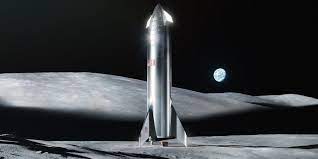
Breaking News
 How To Become Competent, Confident, and Dangerous, with guest Doug Casey
How To Become Competent, Confident, and Dangerous, with guest Doug Casey
 My Hot Take On Bill Gates' Climate Change Essay | Alex Epstein #457 | The Way I Heard It
My Hot Take On Bill Gates' Climate Change Essay | Alex Epstein #457 | The Way I Heard It
 Discussion on Covid Vaccination Should Be Non-Controversial
Discussion on Covid Vaccination Should Be Non-Controversial
Top Tech News
 HUGE 32kWh LiFePO4 DIY Battery w/ 628Ah Cells! 90 Minute Build
HUGE 32kWh LiFePO4 DIY Battery w/ 628Ah Cells! 90 Minute Build
 What Has Bitcoin Become 17 Years After Satoshi Nakamoto Published The Whitepaper?
What Has Bitcoin Become 17 Years After Satoshi Nakamoto Published The Whitepaper?
 Japan just injected artificial blood into a human. No blood type needed. No refrigeration.
Japan just injected artificial blood into a human. No blood type needed. No refrigeration.
 The 6 Best LLM Tools To Run Models Locally
The 6 Best LLM Tools To Run Models Locally
 Testing My First Sodium-Ion Solar Battery
Testing My First Sodium-Ion Solar Battery
 A man once paralyzed from the waist down now stands on his own, not with machines or wires,...
A man once paralyzed from the waist down now stands on his own, not with machines or wires,...
 Review: Thumb-sized thermal camera turns your phone into a smart tool
Review: Thumb-sized thermal camera turns your phone into a smart tool
 Army To Bring Nuclear Microreactors To Its Bases By 2028
Army To Bring Nuclear Microreactors To Its Bases By 2028
 Nissan Says It's On Track For Solid-State Batteries That Double EV Range By 2028
Nissan Says It's On Track For Solid-State Batteries That Double EV Range By 2028
One SpaceX Starship With Solar Drapes Could Energize a 230 Person Moon Base

They looked at how much power a single lunar Starship (100 tonnes) could establish at the best so-called Peak of Eternal Light (PEL) at the lunar south pole.
The concept of operations would be for Starship to deliver a teleoperated wagon that would have telescoping poles and rolls of thin film solar drapes hanging from a suspension line between the telescoping pole. The wagon would move along the PEL ridge using an auger to drill vertical holes every so often and then tilting up and dropping a telescoping pole into that hole. As the wagon moved along, each drape would automatically be pulled out by the suspension line. After all poles were in place, motors would simultaneously cause the pole to telescope, raising the suspension line between them, and hence causing an entire wall of solar drapes to rise up.
The most significant part of the poster is the last section indicating how much could be done with the resulting 5.1 MW of power.
Namely:
– 37.5 tonnes/day – Propellant production (water electrolysis) or
– 28.8 tonnes/day – Iron production or
– 7.9 tonnes/day – Aluminum production or
– 230 residents fed per day.
The proposed system is built from 30 spans (33 telescoping supports) and weighs in at 48.8 tonnes and produces 7.38 MW. There is a 30 tonnes payload budget for the deployment hardware and cabling from the array to the settlement, plus 20 tonnes of payload margin. They are using additional margins elsewhere in the estimates, but these numbers overall are very achievable. The power-system performance is about 150 W/kg and an all-in mission performance of 92 W/kg with comfortable margins. The highest one could reasonably estimate here is 12 MW, which assumes 80 t is reserved for power hardware and 20t for everything else.

 Dark Tidings
Dark Tidings Carbon based computers that run on iron
Carbon based computers that run on iron

